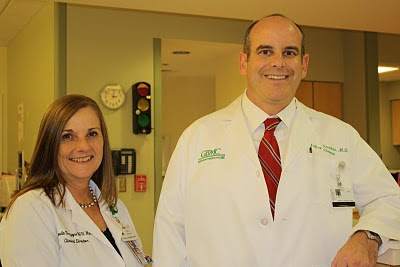So it is easy to understand why the ED is a very busy, frequently over-crowded place and why it can be a very difficult place to work. I am very proud of the people that staff our Emergency Department at GBMC. They do great work and they have made incredible progress at redesigning the processes that they control, all towards the goal of making it better for our patients. From the nurse in triage, to the registration staff, to the nurses, physicians, and other clinicians and staff providing the care and maintaining the rooms, the whole Team has been in action making improvements. I know this because I hear about their work at meetings, I read about it in letters from grateful patients, and I have seen it with my own eyes when I have visited the ED. I was thinking about why it is that the Emergency Department does so well, often against all odds. I have concluded...and I'm sure it will come as no surprise to the readers of this blog....that its about leadership.

Our Emergency Department has two great leaders: Paula Terzigni, RN, our Nurse Manager and Jeff Sternlicht, MD our Medical Director. Paula and Jeff meet with their Team at regular intervals; they celebrate and thank people for their hard work: they study the design for care in the ED and engage their staff in ways to make it better; they take on problems within their control and fix them; and they make direct requests of other leaders for help on things outside of their control. Paula and Jeff are "glass half-full" people. I am very grateful for their leadership and the hard-work and dedication of their staff.
The good news for me, our system, and the community we serve is that GBMC is full of great leaders like Paula and Jeff. I will be thanking them in this blog as we go forward.
The rest of us owe Paula, Jeff and their Team more than words of thanks, however. I would love to hear your thoughts on how to unburden the Emergency Department. What can we do to make non-Emergent care more available in other venues? How can we improve our ability to directly admit patients who need to be admitted from their doctors' offices? How can we move admitted patients from the ED to their inpatient beds faster? (see my blog of August 16, 2010). How can we "smooth" our inpatient bed demand over the five work days so it is more likely that we will have a bed for a sick patient in the ED? Please share your ideas!

